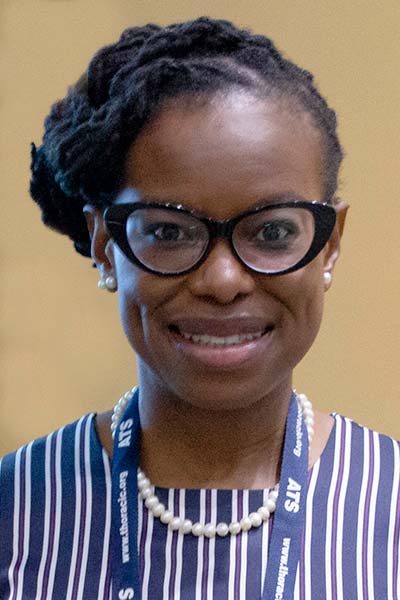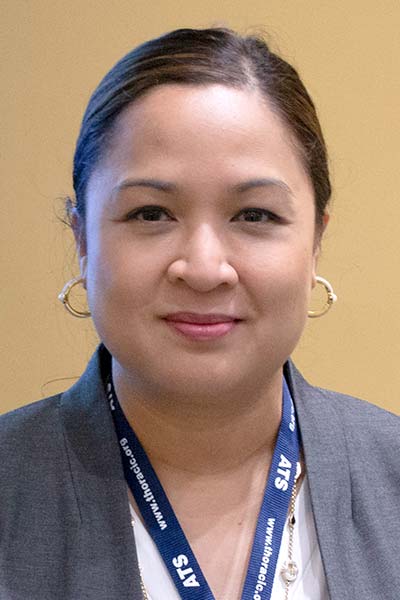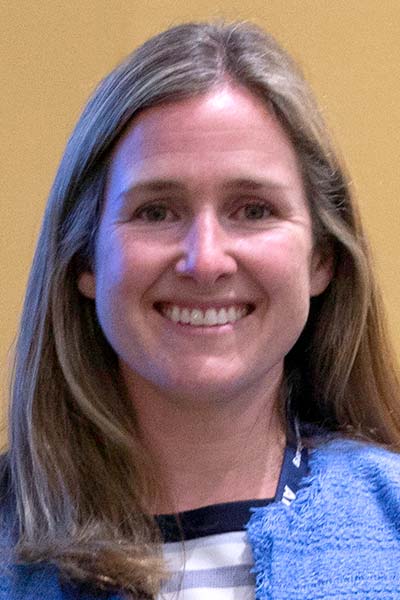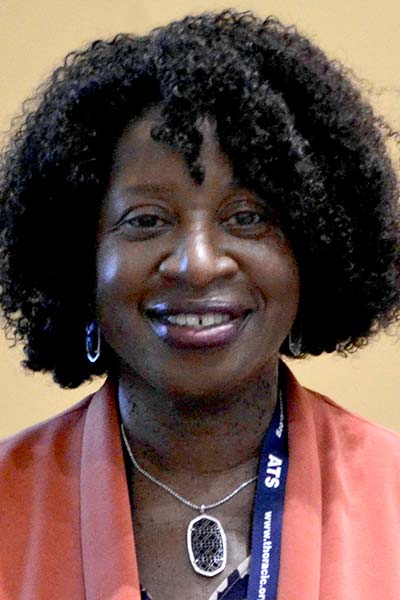Monday’s Pediatric Year in Review session featured a panel of experts who reviewed some of the most recent literature and current issues in pediatric sleep medicine, the pediatric pulmonology workforce, the impact of COVID-19 on the pediatric population, and disparities in pediatric respiratory disease.

Olufunke Afolabi-Brown, MD, Children’s Hospital of Philadelphia/University of Pennsylvania, began the session with an update on pediatric sleep medicine, including a recently published review of current evidence on the epidemiology, clinical presentation, complications, and management of sleep-disordered breathing in children with sickle cell disease.
“Children with sickle cell disease and sleep-disordered breathing are at a risk for negative neurological, neurocognitive, and cardiovascular outcomes, based on this systematic review,” Dr. Afolabi-Brown said. “However, there are no studies to date looking at the long-term impact of various sleep-disordered breathing interventions on quality of life and various clinical outcomes.”
Most of the studies on the management of sleep-disordered breathing in sickle cell disease were retrospectively designed with heterogenous interventions, she said; hence, while there was improvement in the severity of sleep-disordered breathing, the clinical implications remain unclear.
“Given the potentially devastating clinical consequences of untreated sleep-disordered breathing and specifically chronic hypoxemia in this population, it is important to provide regular screening for sleep-disordered breathing in this patient population,” Dr. Afolabi-Brown said.

In the next presentation, Jennifer Rama, MD, MEd, Texas Children’s Hospital/Baylor College of Medicine, presented an update on the state of the pediatric pulmonology workforce in the U.S., including a recent report describing the complex and shifting scope of pediatric pulmonology practice and research.
“Workforce modeling shows that current and projected workforce is sufficient to maintain and grow the total number of pulmonologists, but it is unknown whether it is sufficient to meet the need and demand,” Dr. Rama said.
Due to the impact of cystic fibrosis transmembrane conductance regulator modulators, physician extenders, and growing hospitalist services, she said the future clinical scope will need to shift to opportunities in other areas such as technology dependence, neonatal intensive care, new and emerging infections, and multidisciplinary care teams.
“Additionally, better inclusion of underrepresented groups in medicine among providers of pediatric pulmonary medicine is needed to optimally provide care for children with chronic respiratory disorders, many of which disproportionately affect underserved minority populations,” Dr. Rama said.

Lael Yonker, MD, Massachusetts General Hospital/Harvard Medical School, followed with an overview of the impact of COVID-19 on children, including findings from a recent study that looked at multisystem inflammatory syndrome in children, an inflammatory response that can affect the entire body.
“In this study, 539 patients with MIS-C were compared with 577 patients with severe COVID-19. Risk factors, presenting features, lab values, and clinical trajectory were compared to identify distinguishing features,” Dr. Yonker said. “This case series suggests that MIS-C was more common in 6- to 12-year-olds, non-Hispanic Black children. Additionally, mucocutaneous and cardiovascular involvement was more common in MIS-C, and lab markers displayed a higher degree of inflammation in MIS-C.”
In the session’s final presentation, Beverley J. Sheares, MD, MS, Yale University School of Medicine, discussed disparities in pediatric respiratory disease. Recent studies, she said, show that nearly all pulmonary diseases affect minority children differently than other children.

“The health impact of COVID-19 has exposed longstanding inequities that have systematically undermined the physical, social, material, and emotional health of racial and ethnic communities of color,” Dr. Sheares said. “Factors associated with severe childhood COVID-19 outcomes include preexisting medical comorbidities and higher levels of disadvantage.”
Structural and social determinants of health, discrimination, and distrust of the health care system are all contributors to COVID-19 inequities experienced by the pediatric population, she said.
“There are exposure risks associated with returning to in-person classrooms that may be mitigated by community resources that could provide educational and social support. Increasing testing and vaccination rates in communities of color would also reduce disparities in pediatric COVID-19,” Dr. Sheares said. “Since the causes of health disparities are complex and multifactorial, eliminating health disparities cannot be accomplished by a single intervention. Partners from the public and private sectors are needed to improve population health.”
REGISTER FOR ATS 2024
Register today for the ATS 2024 International Conference! Don’t miss this opportunity to take part in the in-person conference, May 17-22 in San Diego. Join your colleagues to learn about the latest developments in pulmonary, critical care, and sleep medicine.
Not an ATS member? Join today and save up to $540.
